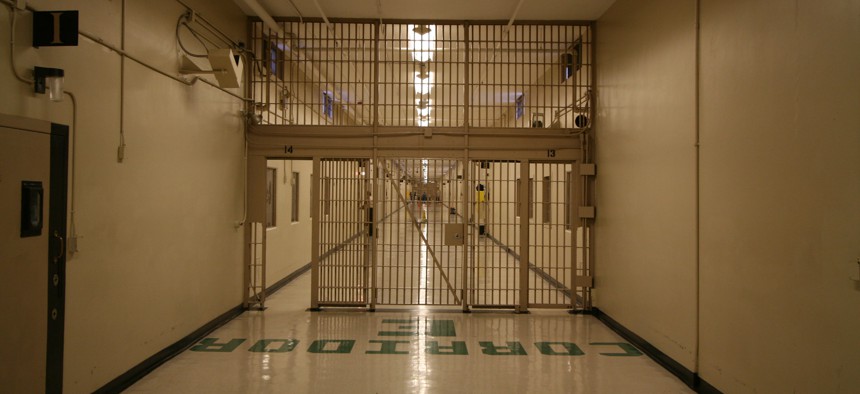Policy
Sentenced to death – by dying while waiting on Florida’s death row
Analysis: Historically, more death-sentenced inmates die in prison than are executed in the Sunshine State.

Florida Department of Corrections/file photo
The cornerstone of the death penalty is the court-ordered execution. But in Florida, a sentence of death often means dying in prison while waiting to be executed.
As of late, Gov. Ron DeSantis has ramped up executions – completing three as of May 3, with another scheduled for June 15. At a press conference in early May, DeSantis promised that his administration will continue executions “at a normal pace.” The recent increased rate of executions came at the same time as he prepared to declare himself a candidate for the Republican presidential nomination in 2024.
Florida currently houses almost 300 prisoners on death row at Union Correctional Institution (UCI) in Raiford, Florida, several of whom are currently eligible for execution. The execution – even the possibility of an execution – is what makes capital punishment different from all other punishments. Since 1976, Florida has executed 102 people.
Even so, decades often pass between the imposition of a death sentence and the execution. All three of the men executed in Florida this year – Donald Dillbeck, Louis Gaskin, and Darryl Barwick – each spent over 30 years on Florida's death row before being executed. The same is true for Duane Owen, whose execution is currently set for June 15.
As of May 18, of the 296 people on Florida’s death row, 246 (83%) had been there more than 10 years; 180 (almost 61%) had been there more than 20 years; and 92 (31%) had been there more than 30 years. The longest-serving death row prisoner as of May 18 had been there for over 46 years. On average, those on death row have been there for nearly 23 years.
Because of the time between sentencing and execution and the overall rarity of executions compared to the number of people on Florida’s death row, those on death row often die of other causes, including suicide and natural causes. For example, between 2019 and present, nine more prisoners died waiting to be executed than were put to death by the state.
The Florida Department of Corrections (DOC) 2021-22 Annual Report states that a little over 24% of “elderly inmates in prison on June 30, 2022 were serving time for murder/manslaughter.” It’s unclear what percentage of those prisoners were on death row.
Since 2019, Florida has executed five people: two in 2019 and three so far in 2023 with another one scheduled. Florida did not execute anyone in 2020, 2021, and 2022 because of COVID and DeSantis unilaterally pausing executions. In the same time, DOC records indicate that at least 14 people on death row died due to causes other than execution.
In 2019-20, DOC reported two deaths on death row other than the two executions. In 2020-21, the department reported three deaths on death row, and there were at least five in 2021-22. Moreover, records show there was a suicide at UCI last June 27. It’s not clear whether that prisoner was on death row.
Finally, in 2022-23, DOC reported at least four deaths on Florida’s death row aside from the people the state has executed thus far, and three deaths remain open cases according to DOC’s records. For one death at UCI this Jan. 12, the cause of death and identity of the inmate is unclear.
Clearly, prisoners on Florida’s death row often spend decades awaiting an execution that may never come. Several authorities, including the Inter-American Commission on Human Rights and justices on the U.S. Supreme Court have said the years-long process of awaiting execution on death row amounts to cruel and unusual punishment.
Retired Justice Stephen Breyer, in his Glossip v. Gross dissent in 2015, argued that the length of time death row prisoners spend awaiting execution violates the Eighth Amendment, writing that the “lengthy delays both aggravate the cruelty of the death penalty and undermine its jurisprudential rationale.”
Breyer also recognized that the delay serves a constitutionally significant purpose in allowing death row prisoners to litigate the validity of their death sentences, writing that unless “we abandon the procedural requirements that assure fairness and reliability, we are forced to confront the problem of increasingly lengthy delays in capital cases.”
Melanie Kalmanson, a member of The Florida Bar since 2016, serves on the steering committee for the American Bar Association’s Death Penalty Representation Project and writes the blog, “Tracking Florida’s Death Penalty.” Kimberly Cioffi is a third-year law student at Howard University School of Law. She is currently a Summer Associate at Williams & Connolly LLP. Previously, she served as a law clerk for the Virginia Indigent Defense Commission, The Public Defender Service for the District of Columbia, and the Federal Defender for the Middle District of Florida’s Capital Habeas Unit. Any views expressed are those of the authors and not of the City & State Florida editorial staff.
NEXT STORY: Judge to weigh legal fight over drag shows in Florida